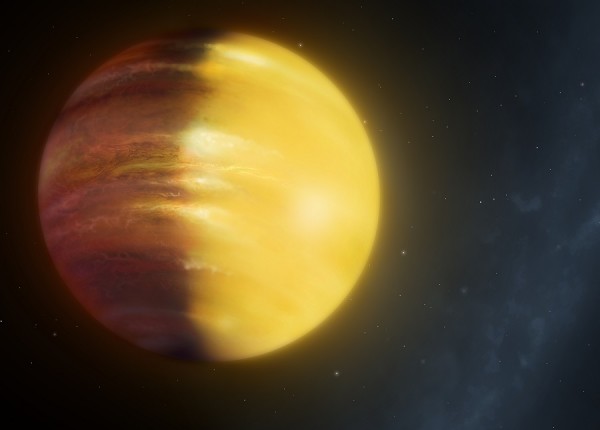By Ana Verayo, | December 13, 2016

First discovered in 2008, HAT-P-7b is 320 parsecs (over 1040 light years) away from us. (University of Warwick/Mark Garlick)
For the first time, astronomers have obtained weather forecasts of an alien planet, possessing wild and powerful winds that are so hot it produces ruby and sapphire clouds.
Scientists revealed that this giant gas exoplanet is similar to a hot Jupiter, located some 1,000 light years away. It was studied courtesy of NASA's Kepler Space Telescope.
Like Us on Facebook
This planet called HAT-P-7b apparently reflects so much light that it appears so bright and also possesses a mass 16 times of Earth.
According to the lead author of the study, David Armstrong of the University of Warwick, since HAT-P-7b is tidally locked to its star, meaning only one side of the planet is facing its sun, clouds will form on the night side of the planet but will evaporate rapidly on its scorching hot dayside.
Armstrong said very powerful winds encircle the planet and this transports the night clouds to its dayside. Wind speeds can change dramatically, causing massive clouds to build up and disappear instantly.
The team also found that the brightest spot on this planet apparently changes its location due to changing winds and violent storms. Since this exoplanet is so blazing hot, temperatures can reach up to 1,700 degrees Celsius on its dayside, forming "morning clouds" that can melt iron.
Apart from this, the violent atmosphere and weather systems produce elements such as corundum and perovskite which are minerals that can form rubies and sapphires on Earth. Astronomers suggest that the hot clouds on HAT-P-7b are very dynamic and colorful due to the presence of these elements.
The team also suggests that this exoplanet possesses clouds that can rain rubies and sapphires, as they appear and disappear in a stunning display of colors.
Scientists say that weather forecasts on other distant exoplanets will soon become possible with the help of Hubble's successor, NASA's James Webb Space Telescope and ESA's PLATO spacecraft.
This new study was published in the journal Nature Astronomy.
-
Use of Coronavirus Pandemic Drones Raises Privacy Concerns: Drones Spread Fear, Local Officials Say

-
Coronavirus Hampers The Delivery Of Lockheed Martin F-35 Stealth Fighters For 2020

-
Instagram Speeds Up Plans to Add Account Memorialization Feature Due to COVID-19 Deaths

-
NASA: Perseverance Plans to Bring 'Mars Rock' to Earth in 2031

-
600 Dead And 3,000 In The Hospital as Iranians Believed Drinking High-Concentrations of Alcohol Can Cure The Coronavirus

-
600 Dead And 3,000 In The Hospital as Iranians Believed Drinking High-Concentrations of Alcohol Can Cure The Coronavirus

-
COVID-19: Doctors, Nurses Use Virtual Reality to Learn New Skills in Treating Coronavirus Patients







